SoundTreks: Hitoshi Sakimoto
By Mento 0 Comments
While I hardly have what you might call a musical background and thus perhaps lack the proper terminology and perspective to discuss and analyze music, there's no downplaying how much of an effect a well-composed soundtrack has on not only the presentation of a game (or really, any sort of media with an audial component) but how much they enhance the themes, settings and emotional impact of certain scenes and sequences with their presence. Occasionally, I want to give credit where credit is due and dig deeper into how a soundtrack has deeply strengthened my appreciation for a game. Or, in this case, how a single composer has improved my experience across a number of games.
With the last SoundTreks, we looked at SNES JRPG Illusion of Gaia and how its relatively unknown musical director Yasuhiro Kawasaki ingeniously and faithfully recreated facsimiles of the orchestral bass drum and flute with the SNES S-SMP chip and built the rest of the game's synth soundtrack around those instruments with tunes that were geographically apropos for the dungeons - almost all of which were based on actual global landmarks, like Angkor Wat, the Nazca Plains or the Pyramids - in which they appear. Despite being a profoundly weird game both in tone and premise given Quintet's predilection with stories of death, rebirth and alternate versions of Earth, the game was grounded by its melodic and emotional soundtrack, which cut through the occasionally shaky translation and sometimes bizarre events (like your friend becoming a giant fish named Riverson after being eaten by same(???)) to the core of the game's themes of adventure and compassion. You sometimes look back on old cartoons, TV shows, movies and games, especially those that don't make a whole lot of sense as an adult, and wonder how you ever took them so seriously as a kid. I think Illusion of Gaia's soundtrack, in its particular case, played a large part in my lifelong appreciation of that game.
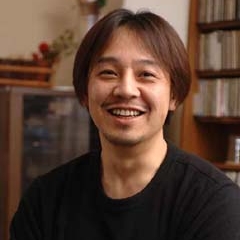
This time, I want to cover the work of a single composer who has worked on a breadth of games, many of which I count among my favorites, and identify and elaborate on how his musical contribution added so much to the overall experience. The composer in this case is Hitoshi Sakimoto, who was an in-house composer for Squaresoft for several years before breaking out and forming his own freelance company Basiscape, through which he has worked on a large and eclectic amount of Japanese games, RPGs and non-RPGs alike. Even before joining Square and learning at the feet of Nobuo Uematsu and the company's other talented musicians, however, Sakimoto had been creating music for dozens of games for years, selling freelance compositions since his high school years.
Trouble is, he frequently works alongside other composers, most frequently with his friend Masaharu Iwata, so my primary goal with this retrospective is to make a case for his distinctive style without conflating his music with that of his frequent colleagues. My secondary stake in this is to prove that a freelancer can mold and shift their particular style to fit whatever their current employer asks of them while still maintaining their own unique, distinct voice that carries from project to project.
There's a number of follow-up composer-focused SoundTrek projects I could consider, though it'd be a challenge to avoid the greats for too long: Uematsu, Wintory, Kondo, Soule, Shimomura, Kaufman, Follin(s), Hip Tanaka, Hulsbeck, Baranowsky, Wise, Kirkhope, Yamane and many others I'm temporarily forgetting. Sakimoto's star power is, in comparison, a little more muted, though I'm hoping his immense body of work will speak for itself. In particular, he's a big proponent of activating a desired emotional state through a medium's music, working with designers and producers to determine how a piece of music should make the player feel at any given moment and working from there with a combination of simple piano melodies combined with more elaborate synth. That might well describe more than a few video game composers, honestly, so I have my work cut out for me here.
Bubble Ghost (1990)
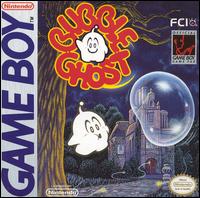
Originally the product of French company Infogrames (now Atari SA), Bubble Ghost materialized out of the ether like a Class Five full roaming vapor on a number of European home computers, but the version I played and am most familiar with is this Game Boy incarnation which was instead licensed to Japanese publishers FCI and Pony Canyon who published the game internationally and in Japan, respectively. They hired Opera House, a contract developer familiar with Nintendo hardware, to help create the Game Boy version and they in turn hired a young Hitoshi Sakimoto (who was 21 at the time) to compose the game's soundtrack.
The game itself involves a tiny ghost blowing a bubble around a maze. The ghost is incorporeal but for the short gusts of wind it can produce, and so has free reign to explore each stage and work out a path to get the far more vulnerable bubble from point A to point B without letting it hit a surface. The game has a lot of little surprises that you have to roll along with, such as learning to turn off electric fans by blowing on their switch or snuffing out candle flames which can burst the bubble at a distance from their heat. The Game Boy version in particular has a lot of cute touches, like the ghost giving the player an irritated expression if they let his bubble burst.
Despite being a cute, unassuming puzzle game, the game's main theme is rousing and optimistic after a slightly sinister start. I get a particularly strong Kirby vibe from this main theme, though it's entirely coincidental as HAL's all-consuming pink blob wouldn't debut for another two years with 1992's Kirby's Dream Land. The game only has three tracks as far as I can tell: the intro, which is just a brief loop, the main gameplay theme, and the victorious end credits track. Wikipedia lists Bubble Ghost as one of Sakimoto's earliest solo professional gigs, and even in this brief smattering of VGM on the Game Boy's limited sound tech, it's clear bigger and better things awaited the young composer.
Ogre Battle: March of the Black Queen (1993)
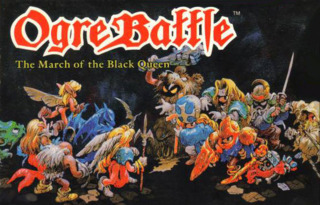
Quest Corporation's Ogre Battle: March of the Black Queen takes on a mixture of strategy and automated turn-based RPG combat, with the player putting together various groups of units and creatures and sending them across a map to fight enemy armies and conquer locations in real-time. The story involves the player leading Zetegenia's Liberation Army, wresting control of the continent away from the villainous Empress Endora and the shadowy forces that support her. The game makes special emphasis on alignment and reputation: the player is capable of playing as an evil or good character, and this affects the units they can recruit as well as the eventual ending they receive (of a possible thirteen).
While I'm generally not a fan of the amount of multi-tasking and attention-dividing that real-time strategy demands, Ogre Battle has a special distinction for three reasons: It was one of the first Japanese strategy RPGs ever released in the US of the type that makes intelligent character development as much of a priority as their deployment and tactics on the field; it marks the first involvement of game author, designer and personal hero Yasumi Matsuno in the type of RPG where his storytelling could be given room to breathe (his previous game was the decent NES platformer Conquest of the Crystal Palace); and also marks Hitoshi Sakimoto's first collaboration with same. Matsuno and Sakimoto would frequently work together from then on out, either as employees of Quest Corporation or later when Quest merged into Square and the duo went on to create the thematically and structurally similar Final Fantasy Tactics as well as many other Square classics.
Ogre Battle's soundtrack was a joint effort of Sakimoto and frequent collaborators Masaharu Iwata and Hayato Matsuo and all three would later work on Ogre Battle's N64 sequel Ogre Battle 64: Person of Lordly Caliber and, some considerable time after that, Final Fantasy XII. Ogre Battle is emblematic of the trio's anthem-like orchestral marches and fanfares, music which might befit a revolutionary army more than a small, ragtag group of heroes. Ogre Battle's music is frequently dramatic and ominous, working with Matsuno's darker themes and story beats. Check out Guerrilla War, Do or Die, Thunder and Wall of Defense and marvel that they came out of a SNES as far back as 1993.
Final Fantasy Tactics (1997)
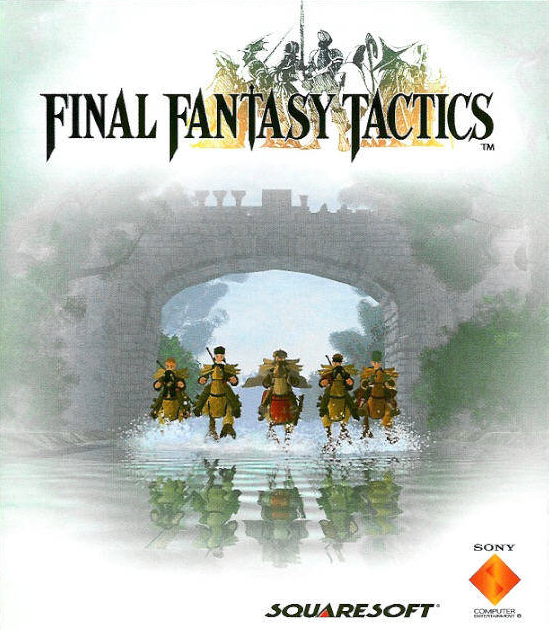
Which, really, is all a precursor to what I consider both Matsuno's and Sakimoto's magnum opus: Squaresoft's Final Fantasy Tactics, an attempt to "Final Fantasy up" Quest's earlier Tactics Ogre spin-off which more strongly emphasized the tactical side of its combat by having the player control each allied character's placement in the battle independently. You were now thinking more in the micro than the macro, with less emphasis on sending armies every which direction and instead maneuvering a small skirmish force with a near-endless amount of customization. The game also cleverly integrates the Job System of Final Fantasy III and V: a RPG development mechanic that allowed characters to progress in several different classes consecutively, often with the option to mix-and-match specific acquired skills and abilities for distinct and versatile builds.
Final Fantasy Tactics is perhaps best remembered for its labyrinthine plot regarding two scheming nobles in a bitter civil war of succession who were carefully manipulated behind the scenes by a cult of demons that had laid dormant for centuries and had at one time been the subject of a greatly embellished religious uprising that canonized their leader, Altima. It's all a very complicated plot, symbolically condemning the aristocrats and theology who routinely stamped on the enfeebled, the poor and the intellectuals, told from the perspective of a future historian that, one assumes, is part of an enlightened Renaissance era that no longer lives in the shadow of an empowered Church's influence and can describe what really happened without fear of being burned at the stake as a heretic.
However, what is perhaps the most viscerally memorable aspect of Final Fantasy Tactics is its music. Sakimoto and Iwata once again invoke Ogre Battle's grandiloquent and dramatic military style for the basis of many of Final Fantasy Tactics' tracks, factoring in nice little touches like Celtic bagpipes for certain pieces. It's hard to choose a favorite between the iconic Trisection, the portentous Antipyretic, the spirited Apoplexy, the dramatic Battle on the Bridge, the downright menacing Lucavi theme and many others. Really hard.
Radiant Silvergun (1998)
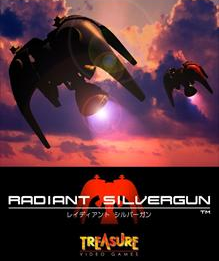
While Sakimoto normally worked on RPGs, he also diversified a little from time to time. Perhaps most notable of his non-RPGs is the soundtrack for the beloved (and notoriously expensive) Arcade/Saturn vertical shoot 'em up Radiant Silvergun.
Radiant Silvergun scores points for its presentation and music, obvious enough since Treasure never skimped on either, but it also has a lot of cool ideas layered on top. Like having seven different weapon types that the player can switch between at any time simply by using a different combination of their three fire buttons, or how its scoring system is directly related to its power-up system and it behooves the player to chase after points to maximize their damage output. It also has an achronological story, depicting the game's events before and after a terrifying robotic presence wipes out all life on Earth, leaving the orbiting Terra space station and the Silvergun pilots onboard the only surviving humans.
Naturally, coming almost immediately from Final Fantasy Tactics, there's a lot of similarities between the two soundtracks. Still a lot of trumpets, drums, violins and other orchestral wind and percussion instruments you might find sitting in a military camp. Given Radiant Silvergun has less to do with medieval armies battling for supremacy and more to do with a singular spaceship blowing up a lot of colorful robotic enemies, it's perhaps a less explicable choice. Still, we're talking Sakimoto at the peak of his game, so it didn't hurt to have more music of a similar caliber around. Try Reminiscence and Evasion or scope out the whole soundtrack here.
Vagrant Story (2000)
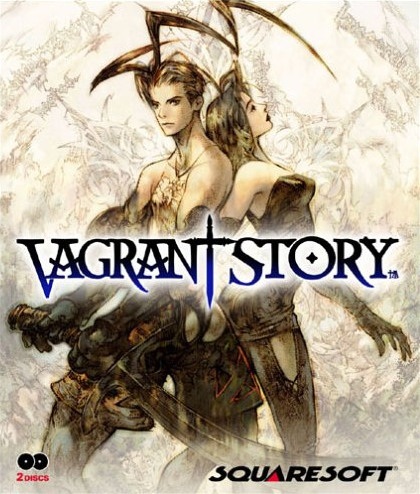
Sakimoto has gone on record to say that he is most proud of his work on Vagrant Story, for which he was once again reunited with Yasumi Matsuno to bring life to Square's unique exploration-heavy RPG. Vagrant Story concerns Ashley Riot, an elite agent also known as a Riskbreaker, as he investigates an enigmatic cult leader operating in the ruined, ancient city of Leá Monde. Along the way, he meets members of the church and other agents on a similar mission to his own and falls afoul of both demons and conspiracies alike. The game has a lot of distinct qualities and harsh rules, and it can be unwelcoming for newcomers who will need to figure out how weapon crafting and elemental vulnerabilities work if they plan to get anywhere, but it's an easy game to fall in love with once you're on its wavelength. Well, provided you don't mind pushing boxes around to make platforms now and again. There aren't many games like it, that's for sure.
We once again have another Final Fantasy Tactics-like soundtrack, though it's a bit more reasonable here as the game is set in the same world and approximate timeframe. It's far more eclectic though, mixing in more styles and instruments to properly convey Leá Monde's mystique and changing environments. It ultimately feels like an evolution of FFT's soundtrack, rather than a rehash, with Sakimoto building on what he learned and factoring in new ideas. It's the quintessential Sakimoto soundtrack and fits perfectly with Matsuno's story and the game's many fights, puzzles, story twists and secrets. While I couldn't possibly nail down a favorite, there's all sorts of places to start from the manic Tieger & Neesa, the chill Factory (which you'll hear a lot while playing, by the by) and the ominous, almost Silent Hill like percussion of Grotesque Creature. Man, now I really want to play it again...
Legaia 2: Duel Saga (2001)
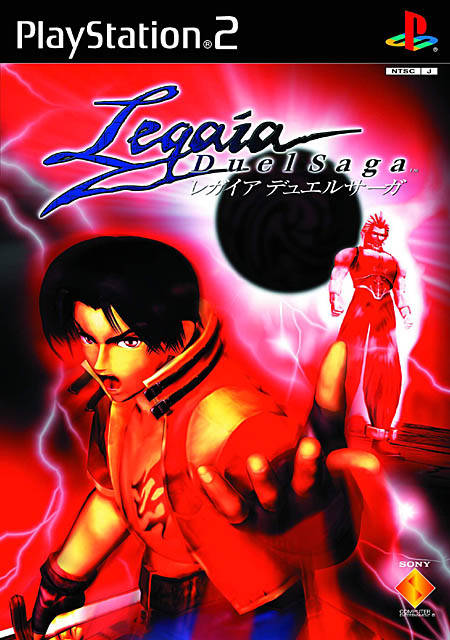
Both Legaia 2: Duel Saga and its predecessor were minor hits for Sony first-party studio Contrail/Prokion, and distinguished themselves from the crowd with their odd, almost fighter-like Tactical Arts System. The games were turn-based, like most JRPGs, but when it was a player character's turn to attack, the player would enter a combination of directions and hits, focusing on whatever an enemy's vulnerable area might be, and by combining attacks in the right way the player could unlock special moves in much the same way as they would in a fighter game.
Legaia 2: Duel Saga was, ultimately, an also-ran in the extremely well-represented pantheon of PS2 JRPGs. While it had a handful of innovations, like an elaborate cooking mini-game that felt partly cribbed from the culinary side-activities of Namco-Bandai's Tales series, it was scuppered somewhat by its mediocre visuals and an overly familiar story about a race of magical beings maligned and oppressed by the superstitious humans they co-exist with. It wasn't particularly well localized for international releases either, which only added to its woes. Honestly, though, you could do a lot worse.
One of Legaia 2's saving graces beyond its combat system is the game's music, which was a joint effort between Sakimoto, the equally talented Yasunori Mitsuda of Chrono Cross fame (among many other games) and Michiru Oshima, who was also no slouch with her contributions to the moody orchestral soundtracks for ICO and The Legend of Zelda: Twilight Princess. The standout track of Legaia 2 is Lost Forest - a gentle woodwind-heavy composition that evokes a feeling of mystery and sylvan beauty. The setting for this piece is naturally enough one of those forest mazes that takes a while to escape from: I sort of blame Secret of Evermore and the Zeldas A Link to the Past and Ocarina of Time for how prevalent those became in video games, but really the trope had been around for much longer. I mean, what else do people traditionally do in forests besides get lost?
Breath of Fire: Dragon Quarter (2002)
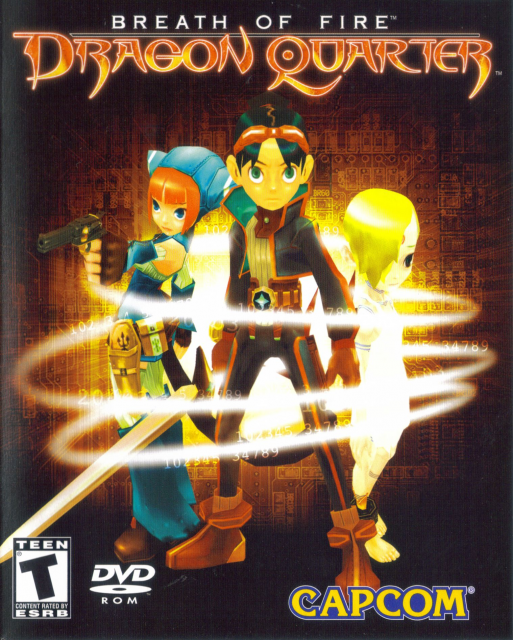
Breath of Fire: Dragon Quarter is nothing if not idiosyncratic. While the first four games in Capcom's turn-based RPG series, the Japanese gaming giant's own take on the format after the genre got indescribably popular in Japan thanks to the likes of Dragon Quest and Final Fantasy, are fairly traditional fantasy fare but for their recurring protagonist's predilection for turning into dragons at opportune moments, the fifth and final (if one were to momentarily forget about the mobile game that came out earlier this year) shifts from the light fantasy to a much darker sci-fi subterranean setting with a rigid and oppressive hierarchical structure and a whole lot of incidental body horror as humans struggle to control the overwhelming power of the ancient dragon deities that have become indelibly linked to their souls. Ryu can still transform into a much stronger dragon form when he needs to kick some ass, but every time he uses this power it increases his synchronization with the dragon soul, represented by an ominous and omni-present "D-Counter". Hitting 100% on this D-Counter essentially causes the dragon within to manifest anew, with the unfortunate side-effect of violently exploding its human host into gooey viscera.
To describe more of the game's plot would take a while: there's a whole thing with D-Ratios, which determines how likely a human is to soul-link with one of the legendary dragons which brings with it an immense amount of power, both arcane and political - the people that occupy the top echelons in this underground soceity sport D-Ratios as high as 1/4 (the dragon quarter of the title) while Ryu's is something like 1/8192 - and how Ryu is joined in his escape to the surface by the guerrilla fighter Lin and series heroine Nina, who is less a royal member of an avian tribe here and more the victim of amoral experiments attempting to produce a living air purification system. Oh, and there's Bosch too, Ryu's haughty one-time colleague and eventual insane nemesis. Of special note is how the game is built for resets: the player will often rely on their dragon powers, which is slowly killing Ryu, to make progress early on. While the player's D-Counter, levels and story progress roll back to zero after each restart, they are able to preserve items, equipment and learned skills and - most importantly - their D-Ratio becomes slightly higher. Because D-Ratio also determines a citizen's station in life, more doors and treasures become accessible to Ryu as it increases. You're not going to beat the game on the first run unless you're some kind of savant, but each new restart gives you a much better chance at success - in that respect, it's not wholly unlike Capcom's later Dead Rising, which expanded on the idea.
The soundtrack is just as eccentric, having to convey a number of grim and industrial locations that Ryu and his party must fight their way through in their desperate bid to ascend through the underworld to the surface above. Sakimoto is the only credited composer this time, and the game demonstrates how effective he is creating atmosphere with synth-heavy tracks like Electric Power Building. EPB starts very mechanically, with various little synth touches that sound like electrical discharge or warning sirens in the distance, but then the bass rises into a hypnotically soothing refrain and it becomes a track that monumentalizes the party's progress and the end of a very long ascent. There's only a few VGM tracks I can think of that can properly pull off that mixture of exhausted relief, anticipation and determination as the game builds to its climax - Persona 4's Almighty or Undertale's Hopes and Dreams for instance - but Electric Power Building nails it. I'll give special mentions to Calling from a Distance and the distinctly Sakimoto-esque bass-y standard boss theme (seriously, this could've been left over from Final Fantasy Tactics).
Final Fantasy XII (2006)
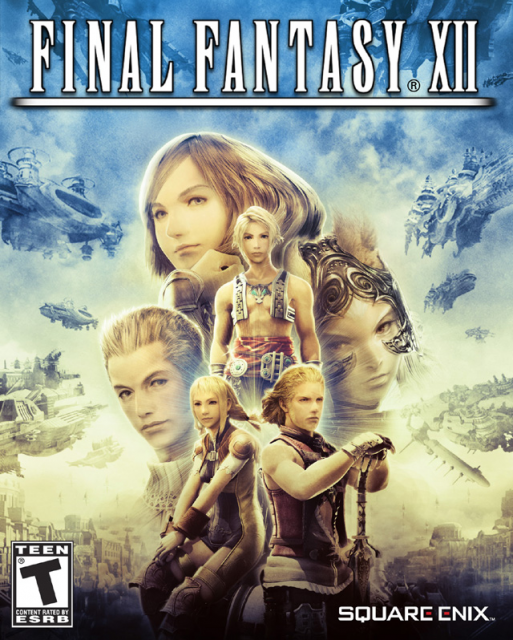
Yasumi Matsuno unfortunately crashed and burned when handed the reins of the newest Final Fantasy. Each flagship Final Fantasy is a massive and stressful undertaking, with so much riding on each one, that he was unable to complete the project and handed it off to his co-director Hiroyuki Ito (who directed Final Fantasy IX) and Hiroshi "Nigoro" Minagawa, a colleague of Matsuno's from as far back as his Quest Corporation days. Still, there's a lot of Matsuno touches left over from when he was still calling the shots, not least of which is the presence of the Ogre Battle composer team of Hitoshi Sakimoto, Masaharu Iwata and Hayato Matsuo. They once again deliver a typically bombastic soundtrack, much like they did for the three Ivalice-set Final Fantasy Tactics games, and though Final Fantasy XII fell through the cracks for many due to its length, its divisive "Gambit" AI programming system and lack of a likeable, focal protagonist, there are many like myself who consider it one of their favorites in the franchise. Heck, anything was better than another MMO, even if FFXII felt a bit like a single-player MMO at times.
The playable characters of the game include a would-be sky pirate, his more pragmatic and endlessly patient best friend, a duo of veteran cavalier sky pirates, a dispossessed princess and a disgraced former knight who was victim to a pernicious conspiracy and might not be as villainous as he first appears - the latter clearly a Matsuno creation. The plot generally involves the party fighting to liberate the princess's now-conquered kingdom, though naturally magical hijinx takes over at some point and it becomes a battle to save the world from the deleterious influence of "deified nethicite" and a tribe of phantasmic beings that have been guiding humanity from the shadows for millennia, as well as a soft-spoken pretty-boy antagonist who transforms into a weird giant monster at the game's conclusion in true Final Fantasy fashion. You can just about make out the point in the story where Matsuno bowed out and a big folder of Final Fantasy cliches was consulted to fill in the leftover blanks.
While the Final Fantasy XII soundtrack perhaps ranks somewhere in the middle out of all the Final Fantasy soundtracks, which is still nothing to sneeze at given the series' high benchmark, there are a number of FFXII tracks I adore. The one I rank particularly highly is the standard boss theme, which builds up in intensity to an incredible refrain, in a similar way to the singular (sorta) track of Vlambeer's Luftrausers. It's not only a great listen, but it keeps you focused on the battle and naturally goads you towards working your way up to a big attack or combination, or some miracle recovery, as soon as that rousing refrain rolls around again and brings with it a sense of invincibility. Who cares if that dragon has fifty million HP? You got this.
Opoona (2007)
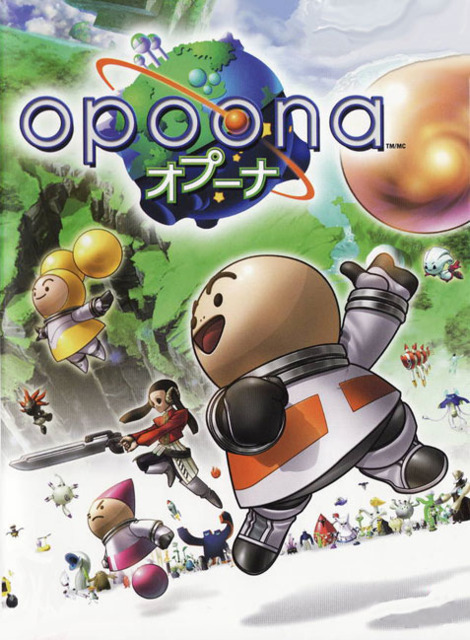
I was actually a little surprised to discover that Sakimoto had worked on this rudimentary if amusing Wii RPG featuring a little potato-shaped alien named Opoona and his floating, orange, telepathically-controlled "bonbon". The game is a weird mix of action-RPG, baseball pitching game and odd jobs simulator. While Opoona fights monsters outside of the protective domed cities of the planet Landroll, he spends the majority of the time inside those domed cities working on improving his citizenry level, which requires that he find gainful employment in many different fields before he can make his way to the next story-critical location. These jobs amount to little more than fetch quests and mini-games, making Opoona a bit more stretched out, simple and repetitive than it needs to be, but there's a certain goofy lightness to the game as well. It has this "Animal Crossing meets Phantasy Star Online" vibe to it, and is every bit the sort of experiment you'd expect to find on a late Nintendo console, well-hidden alongside a legion of uninspired shovelware dreck in game stores across the globe.
I last spoke about Opoona's soundtrack with a rundown of my favorite music of the previous generation, where it squeaked in by a hair due to its idiosyncratic use of sci-fi synth. It feels like the elevator music of the future in some regards, and I mean that in the best possible way in a manner similar to the relaxing lobby music for PSO. At other times, it's a well-made RPG soundtrack that, unlike most of Sakimoto's other joints, doesn't have much to do with anything medieval or military-like in its composition. It's worth noting that Sakimoto worked on the game's soundtrack with his Basiscape team, which includes Iwata and a whole group of other composers, but it's safe to say that most of the musical direction was his prerogative. I'll once again recommend the tracks for Partizans or Tokione.
Valkyria Chronicles (2008)
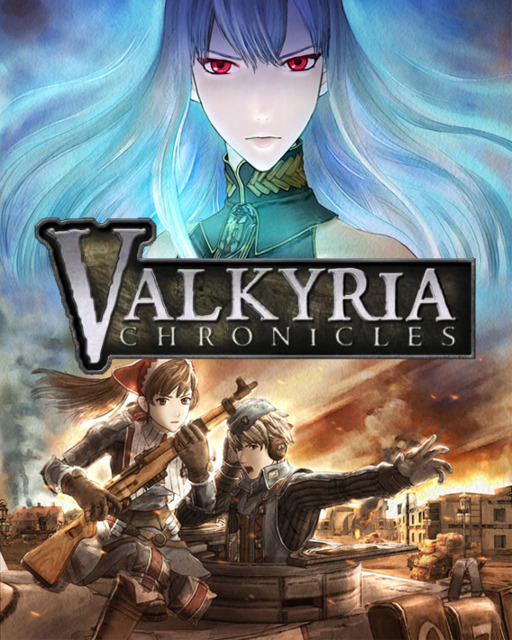
Let's end this with Valkyria Chronicles, where Sakimoto's semi-military stylings are once again at the forefront. Sakimoto is actually the sole credited composer for all three (so far) Valkyria Chronicles games, but I'm just going to stick with the only one I've had the pleasure of playing. Valkyria's soundtrack feels much more like it was made for a TV show, with a lot of melodramatic tracks interspersed with the military marches, but it works for me. It's a pretty melodramatic game, all told.
Valkyria Chronicles is an account of the 1930s war between the fictional sovereign states of Gallia and the East Europan Imperial Alliance. Gallia is actually a smale border nation of the EEIA's democratic rival Atlantic Federation, and despite being a quiet rural country finds itself at the center of the fighting. I suppose its World War II equivalent would be something like Belgium, which often played host to enormous battles that destroyed the modest nation's idyllic countryside again and again. The player, as erudite tank commander Welkin Gunther, is soon pressed into armed service once the war breaks out and becomes the officer in charge of Squad 7, which includes his close friend and scout Alicia Melchiott, the curt singer and stormtrooper Rose and the gruff but warmhearted lancer (a specialized anti-tank unit) Largo. The player can also recruit a number of other scouts, stormtroopers, lancers, engineers and snipers out of a random pool of pre-generated soldiers, many of which have a combination of positive and negative quirks as well as their own distinct personalities.
I particularly like Desperate Fight, the standard level theme, though that might just be my Final Fantasy Tactics fanaticism talking. There's also Valkyria's Awakening which... well, I won't spoil the game, but a moment that dramatic requires an equally dramatic piece of music to go along with it. Just a quick tip: if an anime lady starts to glow blue and suddenly has a lance and shield out of nowhere, you back the heck away. No, further than that. Try the next time zone.
Hopefully that gives you a decent impression on the sort of musician Sakimoto is, whether he's laying down some motif-heavy orchestral music for an RPG or experimenting with new styles in other venues. This will probably save me from writing about Masaharu Iwata too, as a great number of the above tracks can also be attributed to him - if not directly, then at the very least as a co-conspirator who Sakimoto would frequently bounce ideas off.
Hitoshi Sakimoto's Wikipedia page lists a huge discography, many of which I've yet to play myself, and his latest project is the frequently imperiled Kickstarter game Unsung Story: Tale of the Guardians. I'm really hoping a miracle pulls that game through, because another strategy game with Sakimoto and Matsuno is a game I could really use. And I say that both as a fervent fan of the two and as a backer who is less than pleased with the non-progress it is making. Well, fortunately I always have that long-delayed PSP Tactics Ogre: Let Us Cling Together playthrough to fall back on.
Either way, thanks for reading and be sure to post your own favorite Sakimoto tracks in the comments below. Maybe even suggest some of your own favorite VGM composers; there's a lot out there, and they deserve credit for their important musical contributions to our most cherished games.
